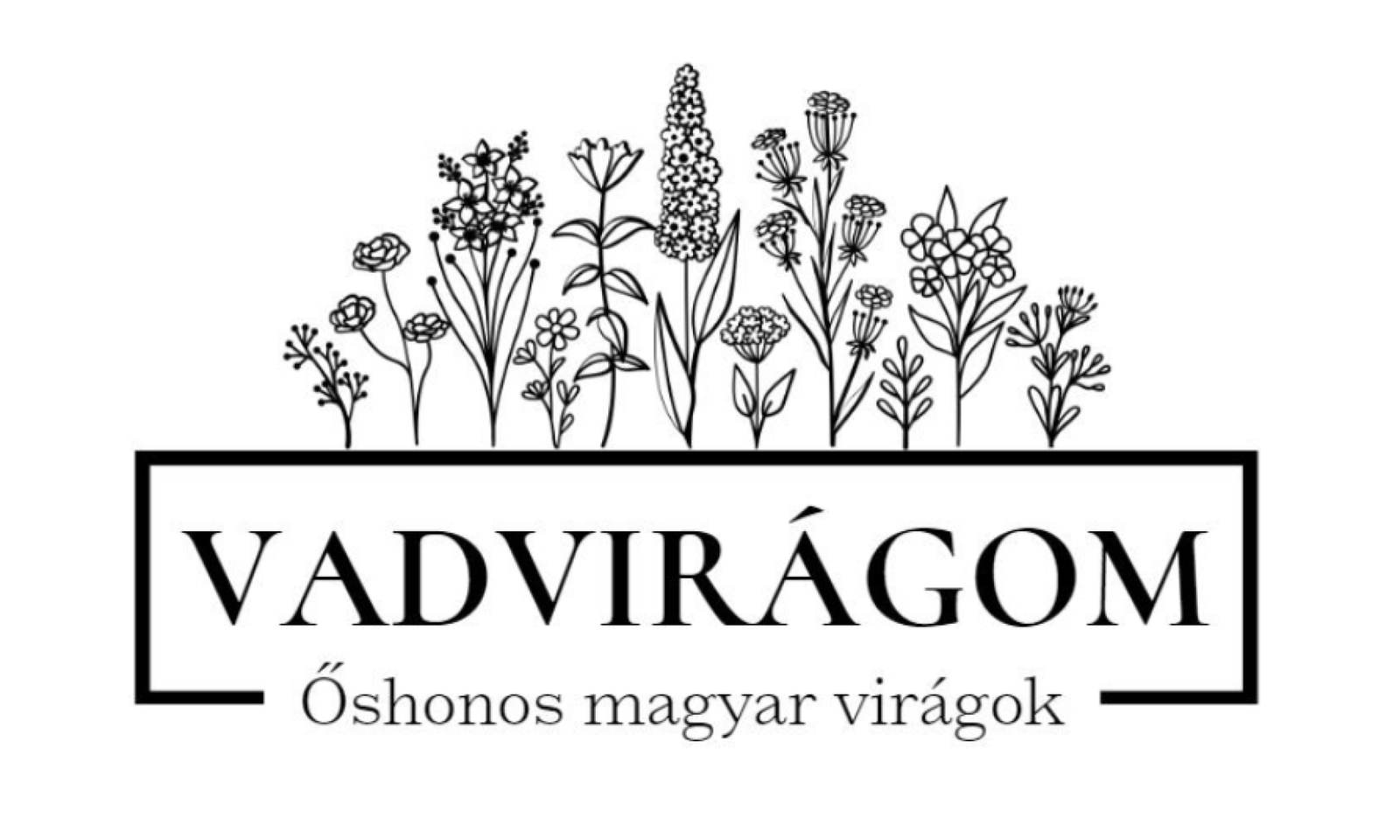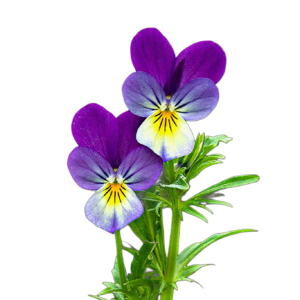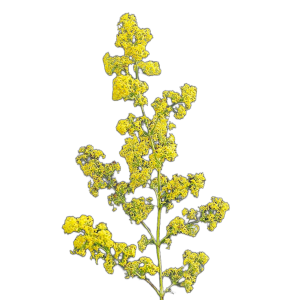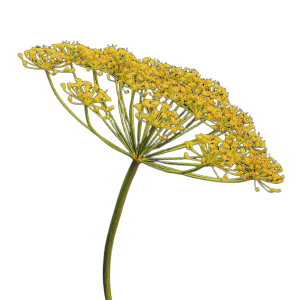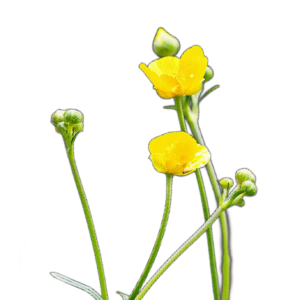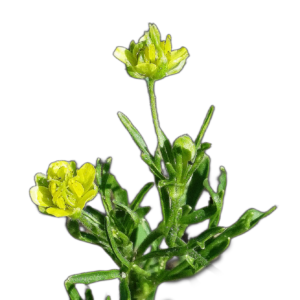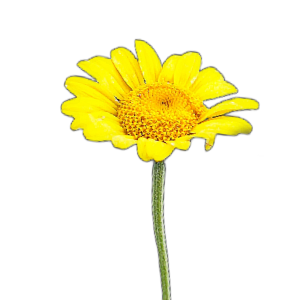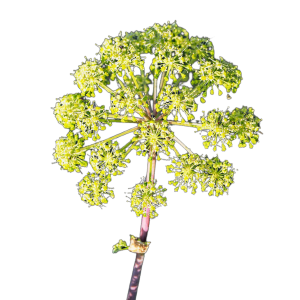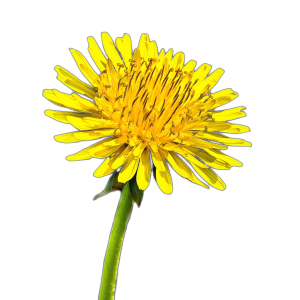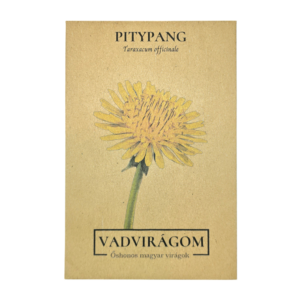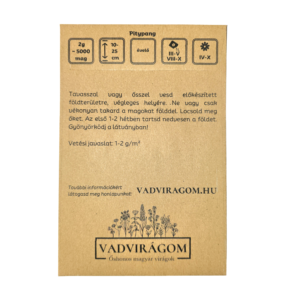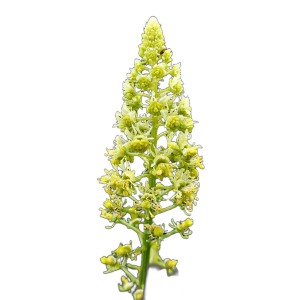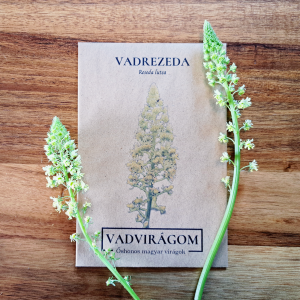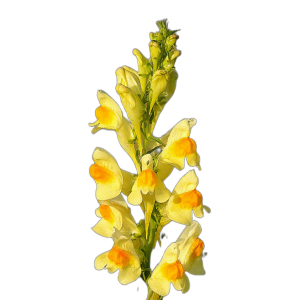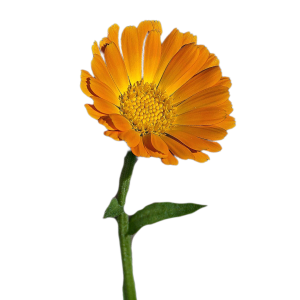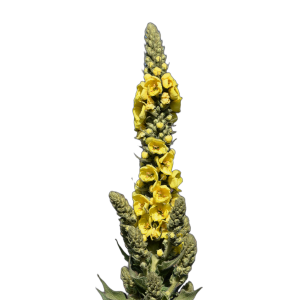“Kamilla (Matricaria chamomilla) 1g, ~12000 mag” a kosárba helyezve. Kosár
-
-
Add to basket
- Add to wishlistAdd to wishlist
- annual, biennial
Iceland Poppy (Papaver nudicaule) 0,25g, ~2000 seeds
- 875 Ft
- Contrary to its name, the Icelandic poppy (Papaver nudicaule) is not native to Iceland, but to the northernmost part of the world. It is a relative of our poppy, which flowers in the same year when sown in early spring and in the following year when sown later, so it can be considered a cold-tolerant annual/biennial. In Scandinavian mythology it has been associated as a symbol of sleep, while in other cultures it has been associated with peace and prosperity. It blooms later than the field poppy, so it...
Add to wishlistAdd to wishlist -
Add to basket
-
-
Add to basket
- Add to wishlistAdd to wishlist
- annual, herb, beekeeper, native
Chamomile (Matricaria chamomilla) 1g, ~12000 seeds
- 875 Ft
- Chamomile, also known as medicinal chamomile, is our best-known and most versatile herb. It can be made into a tea for colds, used as a poultice for inflamed eyes, and as an antiseptic and anti-inflammatory. It is a common ingredient in cosmetics, soaps and shower gels. Its tea has a calming effect and helps you fall asleep. In England, it is also used as an ingredient in craft beers, where not only the flower but the whole plant is added to the beer. As an annual flower, it quickly adds a lovely splash of colour to your garden. When harvested, it...
Add to wishlistAdd to wishlist -
Add to basket
-
-
Add to basket
- Add to wishlistAdd to wishlist
- also in a window box, edible flower, biennial
Pansy tricolor (Viola tricolor) 0,25g, ~375 seeds
- 875 Ft
- The tricolour pansy (Viola tricolor), or wild pansy, is a native Hungarian wildflower. It is perhaps one of our best known and most loved flowers, and fortunately it is often planted in gardens. It is one of the most popular and most loved flowers of our gardens, and it is also one of the most popular and most loved flowers of our gardens. If left to grow, it reproduces very well (it even thrives in the gravel of our driveway!). It is very sweet to my heart,...
Add to wishlistAdd to wishlist -
Add to basket
-
-
Add to basket
- Add to wishlistAdd to wishlist
- also in a window box, edible flower, biennial
Pansy (Viola arvensis) 1g, ~1500 seeds
- 875 Ft
- The field pansy (Viola arvensis) is a native Hungarian wildflower. Its relative, the tricolour pansy, is perhaps one of our most well known and loved flowers, and fortunately it is often planted in gardens. It is a particular highlight of early spring, as the small flowers sown the previous year bloom around March. If left to grow, it reproduces very well (it even thrives in the gravel of our driveway!). A...
Add to wishlistAdd to wishlist -
Add to basket
-
- Out of StockRead more
- Add to wishlistAdd to wishlist
- 10/10 pollinator, annual, bee-feeder
Safflower (Carthamus tinctorius) 10 g, ~200 seeds
- 875 Ft
- Although it is not a native species, safflower (Carthamus tinctorius) can play a very important and useful role in small gardens for pollinators and birds. In summer, it is a favourite of pollinators, while in the winter months its seeds can be an important food source for many bird species (hence its inclusion in the Bird Lure Seed Mix). Historically, safflower has been cultivated for over 4000 years and has been used in many...
Add to wishlistAdd to wishlist -
-
- Out of StockRead more
- Add to wishlistAdd to wishlist
- 10/10 pollinator, perennial, butterfly favourite, bee-feeder, native
Milk thistle (Galium verum) 1g, ~3200 seeds
- 875 Ft
- The milkweed (Galium verum) is a native Hungarian wildflower that attracts many pollinators and is also a food plant for many butterfly species (including many of our protected butterflies, the sedge). It was used to make cheese, hence its name ('gala' means milk in Greek). It can also be used as a yellow dye, and in the past it was used not only to rennet milk but also to colour cheese, for example Gloucester cheese has a strong yellowish-orange colour...
Add to wishlistAdd to wishlist -
-
-
Add to basket
- Add to wishlistAdd to wishlist
- perennial, bee-keeper, native
Wormwood (Tanacetum vulgare) 0,5g, ~5000 seeds
- 875 Ft
- When planting worm castor (Tanacetum vulgare), you don't need to worry about it chasing away our beneficial worms, as it gets its name from its intestinal worming action, not from this. In ancient Egypt they were also used for embalming and then covered with cloth made from flax. When rubbed, it has a spicy, camphorous scent. Because of this property, it is also used in bedding to repel ants, and when dried it can be used to repel moths. Foreign literature...
Add to wishlistAdd to wishlist -
Add to basket
-
-
Add to basket
- Add to wishlistAdd to wishlist
- annual, herbaceous, bee-keeper, native
Capers (Anethum graveolens) 5g, ~3250 seeds
- 875 Ft
- It's strange to describe such a well-known herb, but let's run with it. Without dill (Anethum graveolens), you can't have a proper pickled cucumber or pickle. Or pumpkin stew :) But if you look closely, it actually has quite pretty umbellate flowers, so it's not bad for decoration. But what makes them worth planting in a pollinator-friendly garden is that they are the food plant for one of our most beautiful butterflies, the swallowtail butterfly (the other umbelliferous...
Add to wishlistAdd to wishlist -
Add to basket
-
-
Add to basket
- Add to wishlistAdd to wishlist
- perennial, bee-keeper, native
Ranunculus acris 1g, ~780 seeds
- 875 Ft
- The meadow buttercup (Ranunculus acris) is a native Hungarian wildflower, which, yellowing from May, almost covers the wetter primeval grasslands. Its yellow flowers often stand out in pastures, because, like other buttercup species, it is also poisonous and is not eaten by grazing animals. While seed buttercup is an annual flower, meadow buttercup is a perennial. It spreads by clinging and can form quite large colonies. It has become resistant to herbicides, so...
Add to wishlistAdd to wishlist -
Add to basket
-
-
Add to basket
- Add to wishlistAdd to wishlist
- annual, beekeeping, native
Buttercup (Ranunculus arvensis) 1g, ~180 seeds
- 875 Ft
- Buttercup (Ranunculus arvensis) is a native Hungarian wildflower, which, like poppies, cornflowers and larkspur, is most often found on the edges of wheat fields. Unfortunately, this yellowish-petalled beauty is rarely seen nowadays, as it has become quite scarce in nature thanks to herbicides. Unlike the other buttercups, the seed buttercup is an annual species, which is why it does not spread very widely. Its spring and early summer flowering is a beautiful, lush, yellow...
Add to wishlistAdd to wishlist -
Add to basket
-
-
Add to basket
- Add to wishlistAdd to wishlist
- perennial, herb, bee-keeper, native
St. John's wort (Hypericum perforatum) 1g, ~10500 seeds
- 875 Ft
- St. John's wort (Hypericum perforatum) is a native Hungarian wildflower. Perhaps the most curious information about St. John's wort is that it was used in the Middle Ages as an exorcism for its antidepressant, sedative and mood-enhancing properties. Its use as an exorcism is no longer recommended, but it is used both externally and internally as a medicinal herb. Pollinators (especially bumblebees), however, are delighted by its orange pollen. Properties: other names: dandelion, common dandelion, dandelion with holes in the leaves,...
Add to wishlistAdd to wishlist -
Add to basket
-
-
Add to basket
- Add to wishlistAdd to wishlist
- 10/10 pollinator factor, perennial, butterfly favourite, beekeeper, nitrogen bomb, native grassland, native
Hornwort (Lotus corniculatus) 10g, ~8300 seeds
- 875 Ft
- seeds origin: Austria 1 package contains 10 g, about 8300 seeds. For sowing suggestions and more details, scroll down.
Add to wishlistAdd to wishlist -
Add to basket
-
-
Add to basket
- Add to wishlistAdd to wishlist
- perennial, biennial, bee-keeper, native
Painted chickweed (Anthemis tinctoria) 1g, ~2250 seeds
- 875 Ft
- The Painted Peppermint (Anthemis tinctoria) is a common wildflower, a biennial or short-lived perennial. In the old days its flowers were used to make yellow dye mixed with alum, hence the name. It would also make a lovely addition to rock gardens: it is particularly well suited because of its short stature and drought tolerance. Its leaves resemble those of chamomile, as does its close relative, the parlagi mint (the latter is easily confused with chamomile).
Add to wishlistAdd to wishlist -
Add to basket
-
-
Add to basket
- Add to wishlistAdd to wishlist
- perennial, butterfly, bee-feeder, native
Lysimachia vulgaris 0,1g, ~390 seeds
- 875 Ft
- The common lyssum (Lysimachia vulgaris) is an unfairly unknown Hungarian wildflower. Like the meadow willow (Lythrum salicaria), it prefers wetter habitats, and in English it is called purple loosestrife and yellow loosestrife. Their name is derived from the translation of the Greek name Lysimachus, which ancient records say was named after a general of Alexander the Great. It is a popular ornamental plant in America, where it is considered exotic and is often planted. Here, however,...
Add to wishlistAdd to wishlist -
Add to basket
-
-
Add to basket
- Add to wishlistAdd to wishlist
- perennial, may be sown in grass, herb, beekeeper, nitrogen bomb, native grassland, native
Rabbit's foot (Anthyllis vulneraria) 2g, ~660 seeds
- 875 Ft
- Rabbit's foot (Anthyllis vulneraria) is a well-known herb that has been used to treat wounds externally for its astringent properties. It is also a butterfly plant, so it fixes nitrogen from the air. It can also work when sown in grass: it can be a super component of pollinator-friendly lawns. Properties: other names: wonder clover, clover, cat's claw, rabbit's clover, wound clover, sapuka Latin name: Anthyllis vulneraria family: Fabaceae life: perennial flowering time: may-july size: 15-20 cm soil: average, dry...
Add to wishlistAdd to wishlist -
Add to basket
-
-
Add to basket
- Add to wishlistAdd to wishlist
- herb, herbaceous plant, biennial, bee-feeder
Medicinal angelica (Angelica archangelica) 0,5g, ~110 seeds
- 875 Ft
- Medicinal angelica (Angelica archangelica) is a European wildflower, closely related to the native forest angelica (Angelica sylvestris). It is often used as a medicinal plant and herb, and is cultivated in many places. The root is used as a herb, but the plant should not be allowed to go to seed, the stems should be cut and the roots picked up in the autumn. As a spice, it can be used to flavour salads, sauces and stews. It is used as a...
Add to wishlistAdd to wishlist -
Add to basket
-
-
Add to basket
- Add to wishlistAdd to wishlist
- edible flower, perennial, may be sown in grass, medicinal plant, beekeeper, native grassland, native
Dandelion (Taraxacum officinale) 2g, ~5000 seeds
- 875 Ft
- I don't think anyone needs to be introduced to our best-known herb, which is time for better marketing than ever before. The dandelion (Taraxacum officinale) is one of our most useful flowers for bees: its spring opening is an important time for bee feeding and it also flowers for a long time, even into late autumn. All parts of the flower can be used and eaten: the flower can be used to make syrup, the leaf can be used to make salad, and the root can be used to make chicory.
Add to wishlistAdd to wishlist -
Add to basket
-
-
Add to basket
- Add to wishlistAdd to wishlist
- perennial, beekeeping, native grassland, native
Reseda lutea 1g, ~1250 seeds
- 875 Ft
- Reseda lutea (Reseda lutea) is a native Hungarian wildflower, found mainly in natural grass communities, in some places degraded to a weed. Pollinators would like to argue with the latter :) Its fragrant relative, Reseda odorata, is more often planted in gardens, but wild reseda could also be a nice colour in primeval lawns. In fact, it would be worth introducing it into perennial beds, as it flowers continuously from spring to autumn, making it the perfect lush little yellow...
Add to wishlistAdd to wishlist -
Add to basket
-
-
Add to basket
- Add to wishlistAdd to wishlist
- perennial, herb, bee-keeper, native
Common mullein (Linaria vulgaris) 0,1g, ~700 seeds
- 875 Ft
- The common fireweed (Linaria vulgaris) is an attractive wildflower similar to the garden tansy. It may get its name from the colour and shape of its flowers, which resemble candle flames. In the Middle Ages, it was believed to be a good cure for curses to take a bath in mullein. We do not know about this effect, but it is a favourite food for many of our bees and bumblebees and a food plant for some of our butterflies. Properties: other names: angel's-foot, lady's-slipper, frog's-foot, frog-leg, frog-alfalfa, tree-root grass,...
Add to wishlistAdd to wishlist -
Add to basket
-
-
Add to basket
- Add to wishlistAdd to wishlist
- also for window box, annual, edible flower, herb, beekeeper
Calendula officinalis 2g, ~280 seeds
- 875 Ft
- Calendula officinalis is an annual herb from the Mediterranean. It takes its name from the fact that its seeds resemble the bent curve of a nail. Its flowers are edible and, together with the borage, can be a beautiful garnish for salads. It blooms for months and should be planted next to tomatoes to keep pests away. Properties: other names: borage, gypsy flower, nightingale, nightingale's blossom, marigold, calendula, calendula, calendula, calendula officinalis, cat's claw, cat's claw, cold sore, buttercup, marigold Latin name: Calendula officinalis...
Add to wishlistAdd to wishlist -
Add to basket
-
-
Add to basket
- Add to wishlistAdd to wishlist
- 10/10 pollinator, herb, biennial, bee-feeder, native
Medicinal Strawberry (Melilotus officinalis) 1g, ~500 seeds
- 875 Ft
- Medicinal milkweed (Melilotus officinalis) is our buttercup plant that fixes nitrogen from the air. As well as being used as a medicinal plant, it is a great bee-feeder: it produces nectar and pollen, making it a favourite of honeybees, short-tongued and long-tongued bumblebees (especially thistle bumblebees). Its Latin name is a combination of the words meli = honey and lotus = here. Properties.
Add to wishlistAdd to wishlist -
Add to basket
-
-
Add to basket
- Add to wishlistAdd to wishlist
- perennial, herb, biennial, bee-feeder, native
Verbascum densiflorum 0,5g, ~5000 seeds
- 875 Ft
- The bushy-flowered ox-tail (Verbascum densiflorum) is a native Hungarian wildflower. It has a very imposing appearance, its thick stems were thought to resemble the tail of an ox, hence its name. In the past, the stems were dipped in soot and used as torches. It is a well known herb and its flowers are most often used to make cough tea. It is also a relative of the mottled ox-tail and the purple ox-tail (the latter, unlike the other ox-tails, is purple rather than yellow).
Add to wishlistAdd to wishlist -
Add to basket
